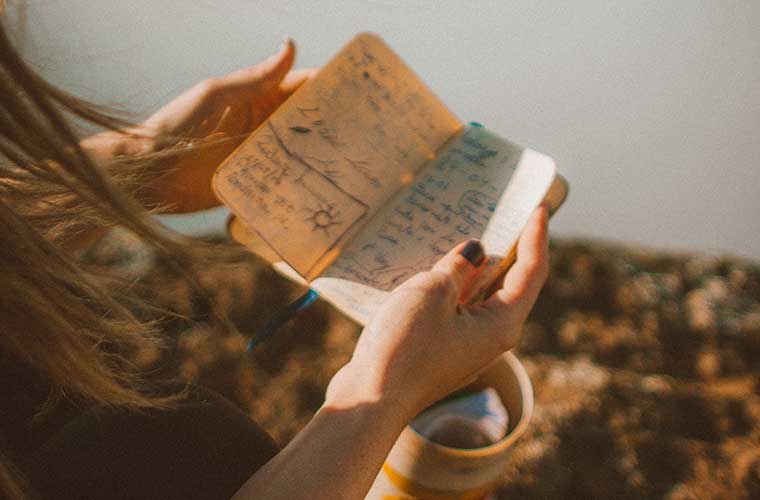Hiking diary: a nice way to preserve your experiences

Hiking is a great way to escape from routine, get out into nature and leave the stresses of everyday life behind. Unfortunately, your experiences, your outings and hikes can fade over time. The best way to prevent this is to keep a diary of all your hiking trips and excursions.
YOU MAY BE INTERESTED IN: Top 8 travel diaries for 2020
Hiking diary
Take a minute to consider your most recent hiking activity - what sticks in your mind, who did you go with, was there anything spectacular that struck you? Now think about the first time you went hiking... do you remember?
Undoubtedly, you remember some things about the place, the people you went with and the routes. But others you don't. The experiences you have forgotten are lost in time. If you keep a hiking diary, this will not be the case.
There are famous examples of people keeping diaries over time. Of course, Anne Franks Diary is a case in point. In her diary, Anne documented the two years her family spent hiding from the Nazis. But your diary will be something else - more lighthearted, of course - more like a travel diary, allowing you to remember your experiences and routes as the years go by.
A good hiking diary fulfils a number of requirements characteristics. Firstly, it should be compact so that you don't have to carry extra weight. Secondly, it should be suitable for the environment in which you are going to use it and you should protect it from the elements and inclement weather. And of course, it should be a blank book for you to fill with memories, facts and anecdotes.
Some topics and points you can include and that can help you to start your hiking diary:
1. Who did you go hiking with?
2. The duration and difficulty of the route,
3. Who you met and contact information for these people,
4. Climatic conditions,
5. Anything important that happened while you were walking,
6. A description of the route you took and alternatives you may wish to try later.
7. Information that relates to the route you have taken - related history, culture, nature, etc. -.
8. Any insider information provided by locals or other hikers you met.
At the end of your route, you should be able to get the following from your diary:
1. Contact information of other hikers you have met
2. Sufficient detail of the route to provide advice to another hiker or in the event of a repeat activity.
3. Memories to reflect on, even if you go back to that diary entry years later, and
4. Something to pass on to your friends, children and/or grandchildren.
To get the most out of your hiking diary, you should write it down just before you start, during breaks, such as lunch, and when you return. It is always interesting to see the different impressions you have before and after a hike, as well as your mood changes as the hike progresses. On a miserably rainy day in winter, the diary will make good reading.
Hiking is a great way to communicate with nature and have a good time. Make sure you preserve the experience with your hiking diary.
READ ALSO:
Fastpacking is not about going faster. It's about going lighter.
If you come from classic trekking, this is the next step: learning to move with less weight,
more fluid and enjoying every kilometre more.
Join the channel and start discovering what lightness feels like.

